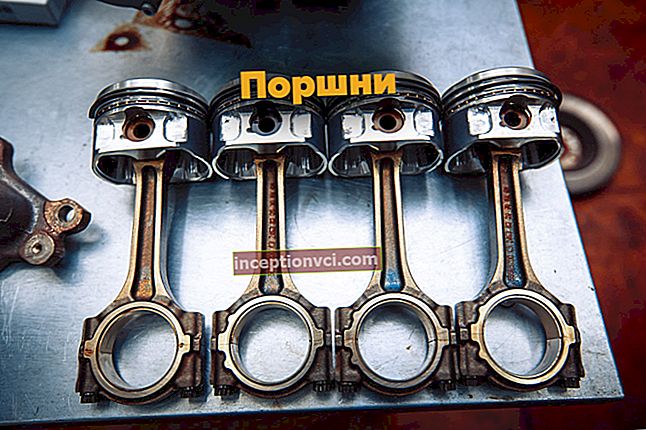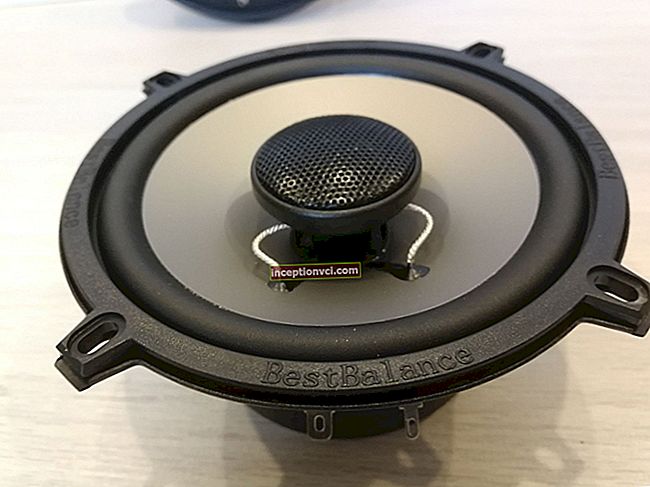Martini - sweet symbol of sweet life

Martini is a world famous brand of vermouths, sparkling wines and aperitifs. Martini is not only a drink, but also a way of life, style, the brilliant world of cinema, art and fashion, the taste of life at its best. Martini is a refined atmosphere of light flirtation and charm, an invitation to live and experience pleasure from every moment. Martini is a haze of a beautiful and slightly carefree life. An invitation you can't refuse, lighthearted and daring, seductive and seductive, inspiring and looking for new experiences.

The secret of the overwhelming success of Martini vermouths lies in their excellent flavor bouquet. The unique combination of spices and herbs gives an extraordinary softness and a captivating bittersweet contrast. Inimitable taste has become a characteristic forever. This brand image was present on advertising posters as far back as the 1920s.

The commercials focus on the breathtaking world of luxury yachts, cars and women. In addition to advertising campaigns, Martini actively participates in organizing and holding events that correspond to the brand's image and are very popular among its consumers - car rallies, sailing regattas, design competitions, bartender competitions, etc.

Vermouth is a flavored fortified grape wine. Turin and its surroundings, located at the foot of the Alps, are rich in Piedmont wines and aromatic plants. These locations are ideal for vermouth production.

The history of this drink dates back to ancient Greece. It is believed that we owe the invention of aromatic wine, the forerunner of vermouth, to Hippocrates, the father of modern medicine. He used tinctures of wormwood and ash flowers to make drinks from sweet wine that would help relieve stress and promote good digestion. Later, the ancient Romans began to use herbs such as thyme, celery, rosemary and myrtle. And the Venetians began to add exotic spices from India, Africa and Indonesia to wines.
In 1847, four Italian businessmen founded the Distilleria Nazionate da Spirito di Vino company. The main activities were the production and sale of wines, vermouths and liqueurs. In 1849, the company's products began to be exported to France, and then to other European countries. After the death in 1863 of one of the owners of the company and the subsequent reorganization, the most energetic and talented employees became its co-owners - the commercial agent Alessandro Martini, the accountant Teofilo Sola and the chief expert on herbs and winemaking Luigi Pocci. The company was renamed Martini, Sola e Cia. For the first time, red vermouth appears on the market, bottled with a label similar to the one we know. Flavored wine made from local grapes, herbs and spices has been produced by the company before, however, it took several years of experimentation by the excellent connoisseur of plants and wines Luigi Pocci to invent a unique combination of noble wines, herbs and spices. Kept a secret until now, this recipe allowed the brand to become the most popular aperitif in Italy, and subsequently to conquer the whole world. In 1864, the first boxes of vermouth were sent from Genoa to America. Since that time, the Martini trademark has been gaining popularity in many countries of Europe, America, Asia and Africa. And in 1878, sparkling wines and vermouths began to be supplied to Russia, which became the 36th in the list of countries - consumers of Martini products. The first medal for product quality was received by the company in 1865 at the international exhibition in Dublin. This was followed by the first places and medals of exhibitions in Paris, Vienna, Bordeaux, Philadelphia, Melbourne.In the second half of the 19th century Martini won diplomas and medals in almost all international competitions and exhibitions. No vermouth in the world owns such a number of medals, which is more than 40.

In 1879, one of the co-owners of the company, Teofilo Sola, dies, and Luigi Rossi buys out his share, and the company receives the name Martini & Rossi. In 1893, King Umberto I of Italy grants the highest permission to use the royal coat of arms on Martini labels. This symbol is still a testament to the consistently high quality of the drinks contained in any Martini bottle. The excellent quality and wonderful taste of vermouth was also noted by foreign monarchs - the right to use the coat of arms or the official status of the supplier of the court was obtained from the royal dynasties of Great Britain, Denmark, Belgium, Austria, Portugal and the Emperor of Japan. And in 1992 Martini & Rossi merged with another family dynasty - Bacardi. Since then, the Bacardi - Martini company has appeared. In 1997, the Martini bottle becomes more elegant and modern, changing its shape for the first time in 134 years. The label design is also undergoing changes, the most significant since the 20s of the XX century. Of course, the company has retained the best design features of the past, and has achieved a harmonious combination of modernity and long-term traditions.

The art of making vermouth is knowledge and inspiration. They are essential for the correct use of certain plant parts and their ideal combination with carefully selected alcohols and wines. For the manufacture of all varieties of vermouth, more than a hundred different spices and herbs are used. One of the aromatic ingredients, the presence of which is a must in the taste of Martini vermouth, is wormwood. Other ingredients whose taste and aroma are reflected in the glass are rose, carnation and lavender flowers, lemon and orange peels, tanning tree and aloe juice, angelica and cardamom seeds, rhubarb root, sandalwood bark, juniper berries, etc. All this variety of ingredients are imported from many countries around the world. But some of the constituents of vermouth grow only in its homeland, Piedmont. The herbal ingredients used in making vermouth are classified as aromatic and bitter. The aromatic ingredients enrich vermouth with natural essential oils, while the bitter ones contain active ingredients that stimulate appetite and promote digestion.
The most significant production secrets and the ratio of ingredients are passed down from generation to generation and are carefully kept secret. They are known only to a select few specialists who work under the guidance of the company's chief expert in blending herbal fragrances - the Herbal Master. The rest of the employees of the plant know the components only by numbers, and not by names.
However, many experts argue that even if all the components of the drink suddenly became known, it would still not be possible to create its original taste. Indeed, for the manufacture of this vermouth, it is important not only to correctly form the bouquet, but also to preserve the aroma and natural taste of plants. The process of growing, drying and obtaining extracts in the company is supervised by a Master of Herbs. It is he who is entrusted with the honorable duty of determining the quality of all 42 components. In such a difficult choice, the Master can only rely on his experience and professionalism. The taste and aroma of herbs is determined by the weather conditions that prevailed in the area where these herbs were grown. This means that their share in the recipe changes. Following this, they begin another important process - the production of plant extracts. Extracts are usually extracted in two ways - infusion and distillation. When infused, plants are added to the alcohol solution, and then the entire mass is placed in a special drum, which makes only two turns a day.With this mode, the plants are not damaged and the bitterness unnecessary for the elixir is not extracted from them. Distillation is used to obtain extracts from raspberries and citrus zest, which are also infused in a water-alcohol solution. After the Master of Herbs has received all the necessary elixirs and essences, the Master of Blending takes over. Its task is the correct selection of wine and the addition of herbal and spice extracts, a small amount of sugar, and a certain proportion of alcohol. The strength of the wine that forms the basis of the vermouth is 11-13%. At the same time, in order to achieve a flavor balance, the strength of Martini is increased to 16%, and the strength of Martini Extra Dry is increased to 18%. Increasing the alcohol content helps all components of the drink to better dissolve in the wine and reveal their aroma. In addition, alcohol plays an additional role as a preservative.

Usually in the manufacture of Martini grapes are used "catarrato" and "trebianto" grown in Piedmont. Each type of wine is selected based on two criteria - the quality of the wine itself and its ability to blend in with the other wines selected for mixing. The wine selected for the production of vermouth is completely neutral. This is achieved with a minimum content of tannins and precise adherence to the acidity level. Thanks to this, the wine creates a base that complements, but never interrupts the taste of aromatic ingredients. Most Martini vermouths have a sugar content of 16%. Martini Rosso contains 15% sugar, Martini Extra Dry about 3%. And Martini Rosso vermouth is unique in that it contains caramel. It is made by heating sugar to 160 ° C for a strictly defined time. The presence of properly made caramel in this drink gives it a pleasant aroma, light bitterness in the taste and a unique amber color. It should be noted that Martini vermouth is an absolutely natural product. The highest degree of purity is achieved without heat or other fabrication methods that would destroy the structure of the product.

The production of each bottle is a complex and multi-stage process that takes approximately 10 weeks. During this time, the drink goes through five main stages. The first stage of preparation is to obtain aromatic extracts, which was mentioned above. As a result of this process, a brown liquid is obtained, which has a rich taste and intense aroma. In the future, it is filtered, kept for a certain time and thoroughly filtered to remove unwanted impurities. The second stage is the purification of the wine, which, despite its excellent quality, contains a certain amount of organic sediment. This sediment hardens over time and turns into tartar. The requirements applied to vermouth do not allow any sediment to be present, so the wine is subjected to a process of precipitation of organic matter in huge vats, and then filtered using fine-pored filters. This process resembles the purification of spring water, which passes through many layers of sand. As a result of such purification, the wine is absolutely clear and transparent. In the third stage, the prepared ingredients are mixed and aged. Mixing takes place in a clear sequence - sugar, alcohol and aromatic extracts are added to the wine. All components of the drink are thoroughly mixed until a homogeneous liquid is obtained. The most important condition is mixing the ingredients in a closed, oxygen-free environment, which guarantees the complete transfer of all components of aroma and taste to the mixture. After mixing, the mixture is left alone. Within a few weeks, all ingredients reach maximum harmony, interacting with each other. The fourth step is liquid stabilization and bottling. In turn, stabilization consists of three stages. First, the drink is cooled to -8 ° C and kept at a constant temperature of -5 ° C for 10 days.This cooling method promotes the precipitation of salts, causing the vermouth to cloud and precipitate in the bottle. Then the vermouth is filtered at the microbiological level through microfilters, and its temperature is restored to normal within a week. And only after that the finished product is bottled. The fifth stage includes automated quality control that ensures that herbal ingredients, alcohol, sugar, and even bottle glass meet stringent standards. Quality control of Martini products is another story. A whole staff of tasters is involved in this procedure. In addition, the company has laboratories equipped with the most modern equipment.
Martini is distinguished according to the mass fraction of certain herbs and spices, sugar content and other constituents.

Martini Bianco (white) - manufactured since 1910. The most popular and widespread type of Martini. It has a light straw color and has a mild aroma with light hints of vanilla and spices. It tastes more refined and less bitter than Martini Rosso. It is usually drunk with ice or lemon. Martini Bianco is also used with tonic, soda or lemonade. It is considered a "feminine drink" because of its taste, but it has the same effect as other alcoholic drinks. More often than other types it is used in its pure form. Whiskey glasses work best in this case.
Martini Extra Dry - manufactured since 1900. It has a straw color with a pronounced aroma, which contains hints of lemon, raspberry and a small amount of iris. Possesses a truly rare aroma. The sugar content in it instead of the usual 16% is only 2.8%, and the alcohol content is increased to 18%. It is usually consumed neat and very chilled. Also used in the manufacture of a huge number of cocktails.
Martini D'Oro - manufactured since 1998. Created taking into account the preferences of the people of Germany, Denmark and Switzerland, who like the taste of white wines combined with fruity notes. In this drink, the aroma of citrus is accompanied by warm notes of nutmeg, vanilla, coriander and honey. It was created specifically for the inhabitants of these territories, but later became widespread in other countries.
Martini Rosato (pink) - Manufactured since 1980. It is the only vermouth that is produced using red and white wine. A tonic drink with a pleasant pink color and a peculiar taste. Possesses a truly delicate and surprisingly persistent bouquet, which contains shades of clove and cinnamon. Has a slightly less bitter taste compared to Martini Rosso.
Martini Rosso (red) - Manufactured since 1863. This is the oldest Martini vermouth, and it was the only one until the beginning of the 20th century. Has a slightly bitter taste and rich aroma. It owes these qualities to an excellent combination of carefully selected wines and herbs. The dark amber color is due to the presence of traditional caramel in its composition. This drink is great both on its own and in cocktails.

Discernment of consumers, competition and growing production volumes - all these factors force even the most famous brands to boldly experiment with promoting their products to the market. Martini in this struggle is always one step ahead of the rest - this alcohol brand has always been famous for its ability to present its products in a unique way.

More recently, a limited edition Martini collection has appeared on sale. The drink itself has remained the same, but only the bottle has changed, the brand logo on which is now located not horizontally, as used to it, but vertically. This move will undoubtedly attract the attention of both longtime fans of the brand and ordinary buyers.

By the way, this is not the first time the company has presented such surprises. Previously, the bottle was designed by the Italian duo Pier-Francesco Giliotti and Maurizio Modica.These designers presented an exclusive version of the Martini image, which was later recognized as the most daring in the history of the brand.

But, probably, the most recognizable bottle of the company, apart from the classic version, is the golden Martini Gold bottle performed by Dolce & Gabbana. The long-term collaboration of the Italian brands resulted in an unexpected and extravagant bottle design, which instantly became the object of desire of the brand's fans all over the world.

When using Martini, snacks are not required, except perhaps the lightest - they drink it before meals, as an aperitif. It is also used in pure form, diluted with water or juice, and is present in various cocktails. Regarding cocktails, today it is no longer possible to name their exact number and the number of their inventors. The Martinez cocktail, invented in the second half of the 19th century, can claim the title of the first-born more than others. At first, it consisted of red vermouth, gin and cocktail cherries, and later gin began to be replaced by other spirits, various juices, fruits, olives, chocolate chips or cream were added to the cocktail.

During the boom of James Bond films, the Martini with Vodka cocktail appeared. In one episode, Bond, when ordering such a cocktail, said “Shake no stir”. This phrase means just the way of making a cocktail - in a shaker. In the Russian translation, it sounded like "Shake, but do not mix." This incorrect translation became a kind of proverb and turned out to be unusually tenacious. It is paradoxical, but it is he who conveys the essence of vermouth - a contradictory combination of bitterness and sweetness, a kind of play of aroma and taste, which cannot be divided into separate components.

Since the 60s of the XIX century Martini has been producing its products in their historical homeland - in the Italian town of Pessione, located near Turin. In those days, it was a small village near the railway that connected Turin with the Asti wine region and the seaport in Genoa. Today, new workshops for the production of sparkling wines, vermouth, liqueurs and other spirits, laboratories for the control and development of new products, as well as a tasting room, a wine museum and the offices of Bacardi have been erected near the production buildings and cellars of the past centuries. - Martini.









